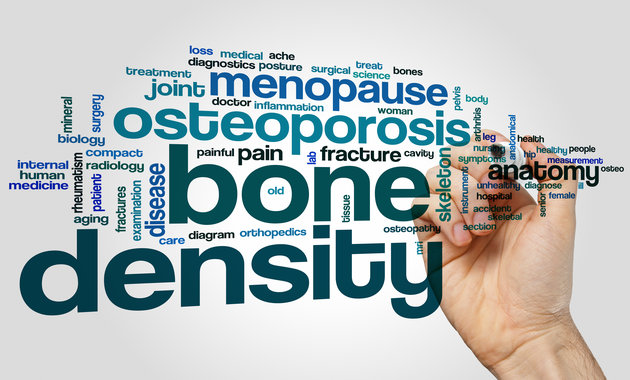
The term ‘Osteoporosis’ means ‘porous bones’, which occurs when the protein and mineral content (particularly calcium) in the bone gets depleted in increased amounts. This further leads to reduced bone mass, and gradual reduction in bone strength, making the bones more fragile and susceptible to fracture. Osteoporosis has become a serious health problem among a majority of the individuals, worldwide. Women and men equally begin to lose bone mass in their mid-30s, after menopause women have a faster bone loss.
Why are postmenopausal women at an increased risk for osteoporosis?
– A direct link between decreased estrogen levels during perimenopause (three- to five-year period before menopause occurs) and menopause and the development of osteoporosis is observed.
– Reduced ovarian function at menopause also results increased follicle-stimulating hormone levels, which cause a marked increase in bone resorption and rapid bone loss.
– Early menopause (in women aged <40 years) or prolonged periods— in which hormone levels are low and menstrual periods are either absent or irregular— can also lead to increased loss of bone mass, thereby, amplifying the chances of osteoporosis.
– Several other risk factors also contribute to postmenopausal osteoporosis, such as age, a period of amenorrhea, parental history of fracture, dietary calcium intake, low body mass index, smoking, decreased physical activity, and increase alcohol consumption.
What are the symptoms of post-menopausal osteoporosis?
In the initial stages of osteoporosis, bone loss occurs without symptoms.
Once bones are weakened, symptoms include a backache, loss of height over time, stooped posture, a bone fracture that occurs easily. Most common fracture sites are wrist, spine, shoulder and hips
How is it diagnosed?
Diagnosis is established by:
Bone mineral density scan (X ray) called DEXA (Dual-energy X-ray absorptiometry) scan.
Blood tests: Serum Vitamin D, calcium, phosphorus, alkaline phosphatase and parathyroid hormone.
What should you do if you have post-menopausal osteoporosis?
Here is what you can do to manage osteoporosis better:
Say goodbye to your sedentary lifestyle
Stay physically active. Opt for jogging, brisk walking, aerobics, by following a regular exercise program. Weight-bearing exercises are really helpful as they make bones and muscles stronger, therefore preventing bone loss. You can also include strength and balance exercises in your daily routine
Increase your calcium and vitamin D intake
You can add these either by supplementation or have a diet rich in calcium and expose your skin to the sun for 10-15 minutes daily for adequate vitamin D levels. Calcium-rich dietary sources include green, leafy vegetables, nuts, seeds, dried fruits.
Avoid smoking and cut down alcohol intake.
Smoking and drinking not only affect your bone health but also deteriorate your overall health and general well-being.
Consider hormone replacement therapy
Osteoporosis caused due to altered hormonal levels (estrogen and follicle-stimulating hormones) requires specific treatment, which usually includes hormonal replacement therapy. Visit your doctor, as he/she will prescribe you the required medications after a thorough examination.
Stick to your medications
If your doctor has prescribed medications to stop further bone damage or if you have been prescribed supplements make sure you take them on time.
Recommended Reads:
Calcium Robber Foods Which Fast Tracks Osteoporosis
Electroacupuncture Found To Benefit Women With Urinary Incontinence